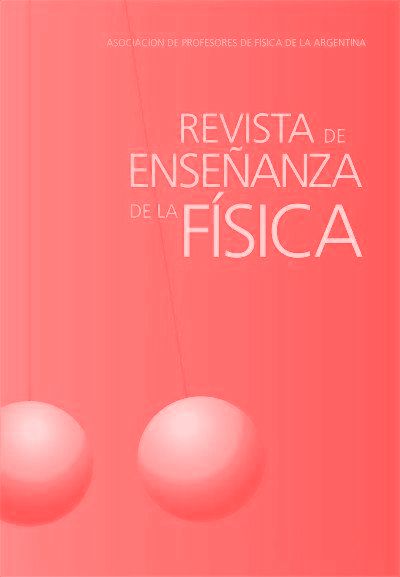Cultivating physics and mathematics: exact and natural sciences applied to the development of an agroecological and community vegetable garden
DOI:
https://doi.org/10.55767/2451.6007.v32.n2.31189Keywords:
Educational physics; Natural and Exact Sciences in interdiscipline; CTSA approach; Creative production project; vegetable gardenAbstract
This paper proposes to rediscover the teaching of the subjects Physics and Mathematics from the initial approach of problem situations identified in the development of a sustainable productive project, in a Baccalaureate for Adults with humanistic orientation from the Buenos Aires conurbation. Starting from the initial estrangement from the exact sciences and prioritizing doubt and curiosity as inherent aspects of the human being, the points of anchor are established between observed and perceived real life, daily needs, individual and neighborhood, and the curricular content of both disciplines. The choice of the agro-ecological garden, whose development involves interdisciplinary work between the exact and natural sciences, social and humanistic, was made in a collective manner, responding to the neighborhood’s socio-economic needs. Through observation, the formulation of questions, the choice of variables and their algebraic relations and the practice in constant relation to the construction of new semantic categories, we promote the resignation of knowledge, research learning, solidarity and critical interaction and the creation of productive alternatives and territorial and human development, addressing, from concrete concerns, levels of abstract conceptualization.
References
Acevedo-Díaz, J. (2004). Reflexiones sobre las finalidades de la enseñanza de las ciencias: educación científica para la ciudadanía. Revista Eureka sobre enseñanza y divulgación de las ciencias, 1(1), 3-16.
Aikenhead, G. (2005). Educación Ciencia-Tecnología-Sociedad (CTS) Una buena idea como quiera que se le llame. Educación química, 16(2), 304-315.
Axaopoulos, P. (2011) Basic Principles of Solar Geometry. En Solar Thermal Conversion: Active Solar Systems. Athens: Simmetria.
Galagovsky, L. R. (2004). Del aprendizaje significativo al aprendizaje sustentable: parte 1, el modelo teórico. Enseñanza de las Ciencias, 22(2), 229-240.
García, R. (2006), Sistemas complejos. Conceptos, método y fundamentación epistemológica de la investigación interdisciplinaria. Barcelona: Gedisa,
García, R. (2011) Interdisciplinariedad y sistemas complejos. [En línea] Revista Latinoamericana de Metodología de las Ciencias Sociales, 1(1). Disponible en: http://www.memoria.fahce.unlp.edu.ar/art_revistas/pr.4828/pr.4828.pdf
Hewitt, P. (2007) Física conceptual. Décima edición México: Pearson Educación.
Amil. (2017). How to Learn Better with Feynman Technique (Examples Included)? What You Don’t Learn in College? Lemond Grad Disponible en: http://lemongrad.com/feynman-technique/
Meroni, G., Copello, M. I., Paredes, J. (2015). Enseñar química en contexto. Una dimensión de la innovación didáctica en educación secundaria. Educación química, 26(4), 275-280.
Membiela, P. y Padilla, Y. (2005). Retos y perspectivas de la enseñanza de las ciencias desde el enfoque 18 Ciencia-Tecnología-Sociedad en los inicios del siglo XXI. Educación Editora.
Rojo, A. (2015) La física en la vida cotidiana. 1.a ed, 7.a reimpr. Buenos Aires: Siglo XXI.
Rodríguez Zoya L.G. (2017). Complejidad, interdisciplina y política en la teoría de los sistemas complejos, de Rolando García. Civilizar Ciencias Sociales y Humanas, 17(33), 221-242.
Sanmartí, N. (2007). Hablar, leer y escribir para aprender ciencia. En: Fernández, P. (coord.) La competencia en comunicación lingüística en las áreas del currículo. Colección Aulas de Verano. Madrid: MEC
Solbes, J., Vilches, A. y Gil, D. (2001) El enfoque CTS y la formación del profesorado. En Pedro Membiela (Ed.), Enseñanza de las Ciencias desde la perspectiva Ciencia-Tecnología-Sociedad. Madrid: Narcea. Capítulo 11 (163-175).
Solbes, J. y Vilches, A. (2004) Papel de las relaciones entre ciencia, tecnología, sociedad y ambiente en la formación ciudadana. Enseñanza de las Ciencias, 22(3), 337-348.
Tuzón, P. y Solbes, J. (2014) Análisis de la enseñanza de la estructura e interacciones de la materia según la física moderna en primero de bachillerato. Revista Didáctica de las Ciencias Experimentales y Sociales, 28, 175-195.
Downloads
Published
Issue
Section
License

This work is licensed under a Creative Commons Attribution-NonCommercial-NoDerivatives 4.0 International License.
Aquellos autores/as que tengan publicaciones con esta revista, aceptan los términos siguientes:Los autores/as conservarán sus derechos de copiar y redistribuir el material, bajo los términos estipulados en la Licencia de reconocimiento, no comercial, sin obras derivadas de Creative Commons que permite a terceros compartir la obra bajo las siguientes condiciones:
- Reconocimiento — Debe reconocer adecuadamente la autoría, proporcionar un enlace a la licencia e indicar si se han realizado cambios. Puede hacerlo de cualquier manera razonable, pero no de una manera que sugiera que tiene el apoyo del licenciador o lo recibe por el uso que hace.
- NoComercial — No puede utilizar el material para una finalidad comercial.
- SinObraDerivada — Si remezcla, transforma o crea a partir del material, no puede difundir el material modificado.
- Los autores/as podrán adoptar otros acuerdos de licencia no exclusiva de distribución de la versión de la obra publicada (p. ej.: depositarla en un archivo telemático institucional o publicarla en un volumen monográfico) siempre que se indique la publicación inicial en esta revista.
- Se permite y recomienda a los autores/as difundir su obra a través de Internet (p. ej.: en archivos telemáticos institucionales o en su página web) antes y durante el proceso de envío, lo cual puede producir intercambios interesantes y aumentar las citas de la obra publicada. (Véase El efecto del acceso abierto).










